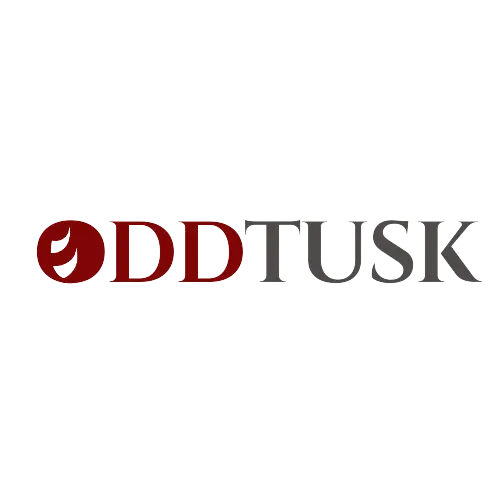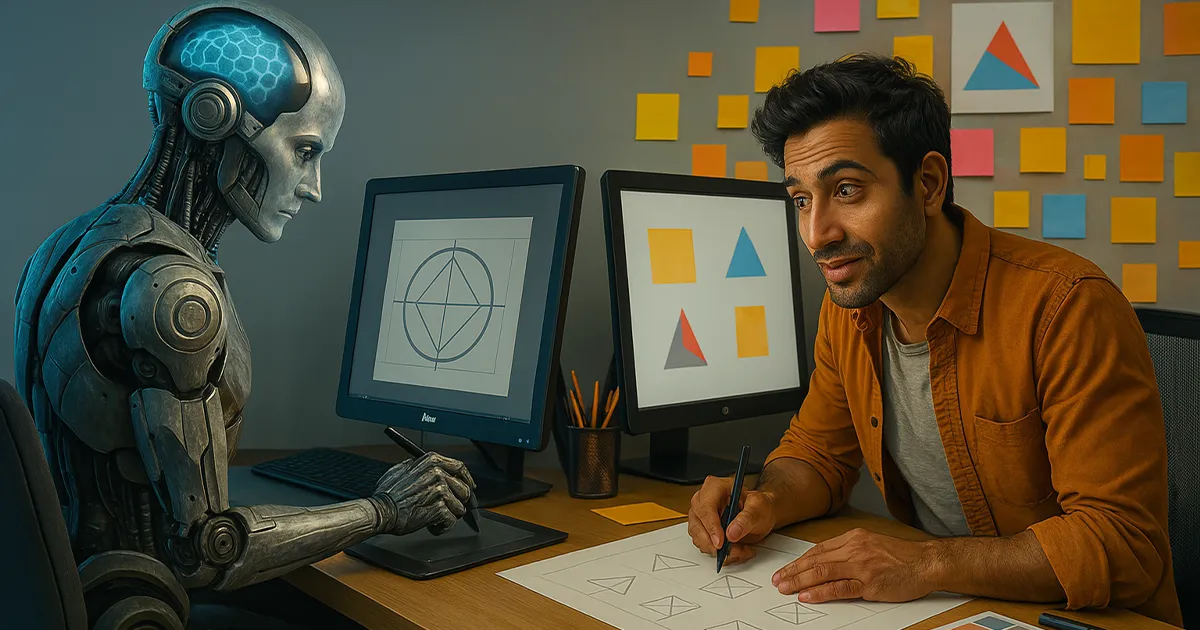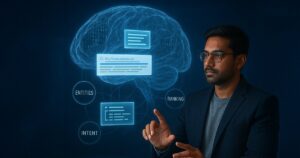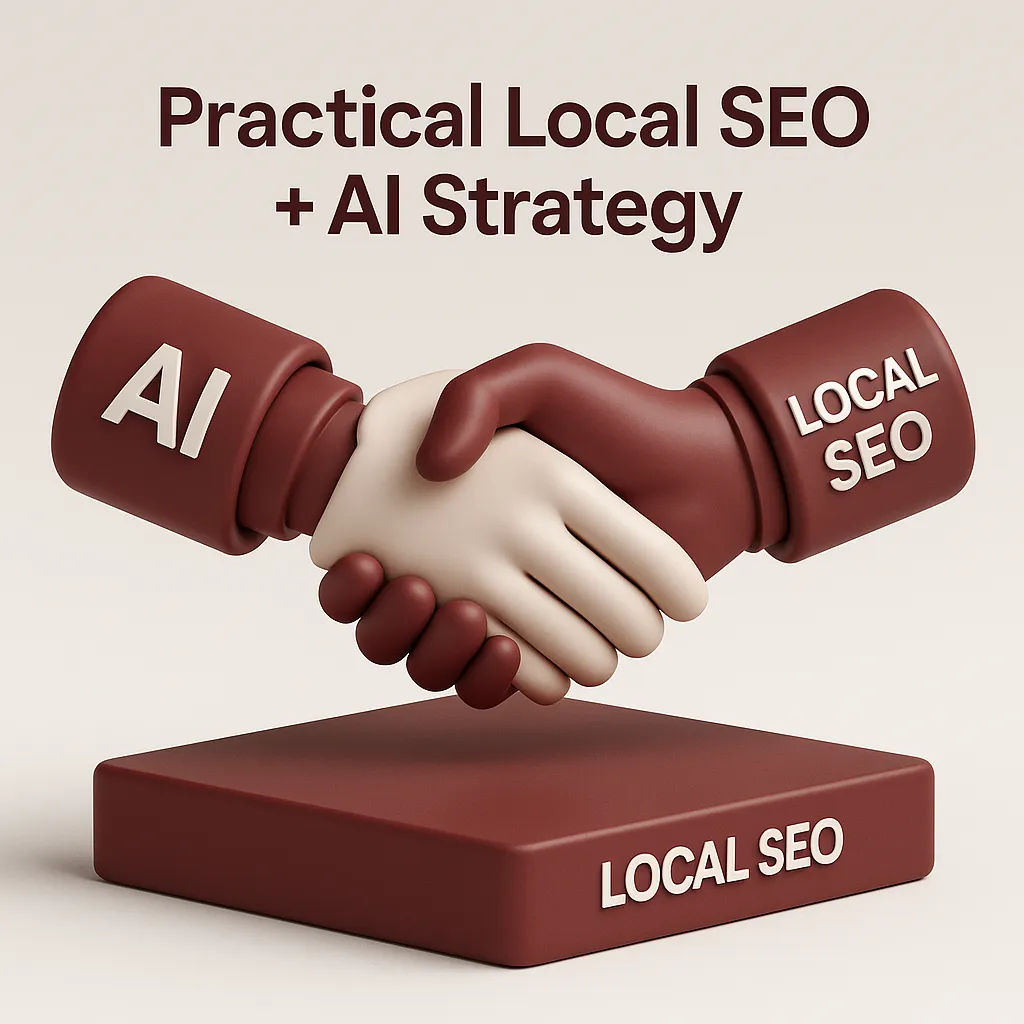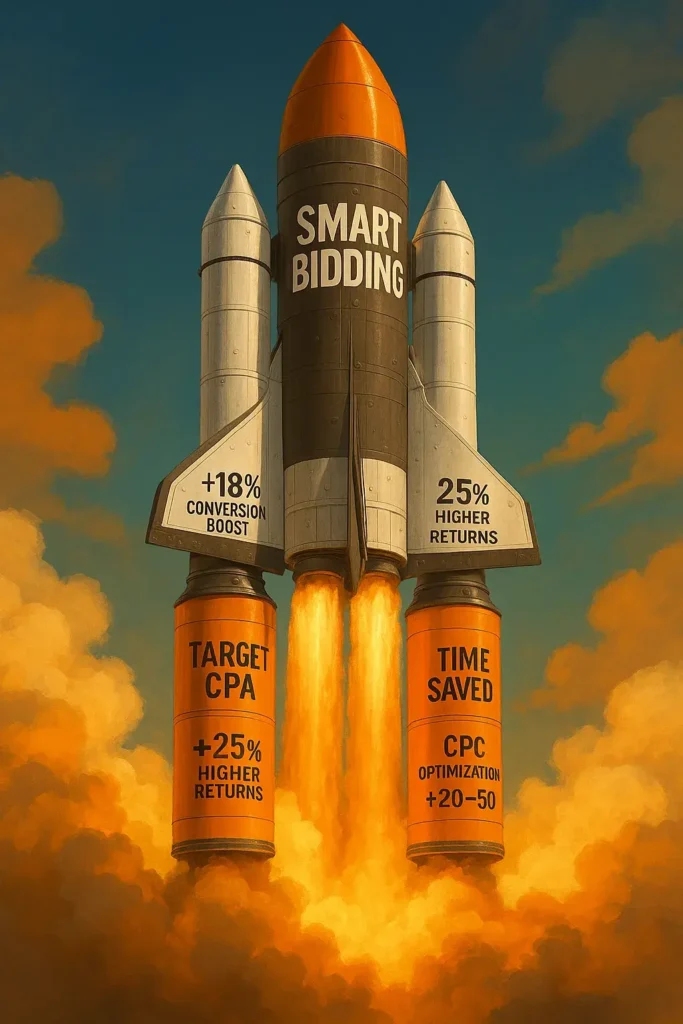Creativity vs Code - Who Wins?
“Will AI steal my job?” It’s the question echoing among every design studio, Slack groups, and caffeine-driven brainstorming sessions in 2025. The speed at which automation is being incorporated into design, from generating logos to creating social media visuals with a simple command, is remarkable. Yet, before we mourn the loss of creative thinking, perhaps we should pose a more thought-provoking query: Will AI replace creativity or merely redefine it?
While AI has certainly changed how things are done, it’s unlikely to replace the human touch, intuition, and originality that define true creativity. Creativity isn’t just about making things look good; it’s about making things feel real. And that’s something no prompt can replicate.
Let’s decode the key aspects of the AI-powered creative world, including its impact on your workflow and why collaboration, rather than competition, is the way forward. And explore how graphic designers and brand builders can not only survive but thrive in a world where AI is present. Almost everywhere.
The Evolution of Creativity in the Age of AI
Every new technology has sparked the same fear: Will it kill creativity? Throughout history, from the printing press to Photoshop, every innovation has been met with skepticism. The present use of AI falls in line with this pattern, as it is simply the newest addition to the array of technologies that have reshaped the way we work.
However, unlike previous tools, AI isn’t here to replace, but rather to extend human creativity.
Just as the camera didn’t kill painting, digital didn’t kill hand lettering; AI won’t kill creativity.
AI, at its core, assists, augments, and enhances the creative process. With its capabilities, designers can brainstorm at a faster pace, create mood boards more efficiently, and automate repetitive tasks, leaving more time for high-level creative thinking.
According to a report from Gitnux, graphic designers using AI tools have seen project turnaround times cut up to 35%.

However, AI will never possess the same cultural insights, emotional intelligence, or profound brand understanding that only a human mind can bring to the table.
What AI Can (and Can’t) Do in Design: Superpowers with Limits
AI can generate a dozen Instagram posts in 30 seconds. But can it read the room during a pitch or translate a brand’s personality into pixels? Not so much. Knowing when to utilize AI’s strengths and acknowledge its limitations is key to wielding it strategically.
AI can generate creative-looking outputs, but it doesn’t truly create in the human sense. Here’s why:
- AI utilizes patterns and data, rather than emotion, context, or intuition.
- It cannot originate an idea — it can only remix, reframe, or repackage.
- It doesn’t understand branding goals or cultural nuance.
Consider this scenario: Would you feel comfortable relying on a machine to create your wedding invitation? Probably not. Because it’s not just about aesthetics, it’s sentiment.
Where AI Wins: Speed, Scale, and Repetition
- Generate multiple design variations in minutes, ideal for A/B testing.
- Optimize designs for specific platforms, ensuring your content looks perfect across different screen sizes.
- Automate repetitive tasks like resizing images, background removal, or even generating basic layouts.
- Analyze user preferences to generate data-driven design decisions.
Where It Doesn’t Much: Strategy, Emotion, and Taste
- Interpret nuanced cultural contexts or emotional undertones, which are essential for brand building.
- Understand brand storytelling, a key skill for creating memorable, human-centered campaigns.
- Handle subjective aesthetic decisions: taste, intuition, and emotional resonance are qualities AI lacks.
Human designers bring:
- Strategic thinking: Who is this for? Why does this matter?
- Conceptual storytelling: Not just visuals, but narratives.
- Aesthetic judgement: Knowing what feels right, even if it’s not technically “correct.”

Ultimately, AI can accelerate the process, yet it will always depend on human creativity for concept development, storytelling, and brand identity.
The New Role of Graphic Designers in 2025
Graphic design in 2025 looks very different. Designers have evolved from solely focusing on aesthetic appeal to becoming multi-skilled, tech-savvy professionals who can seamlessly merge creativity with technology.
The Modern Designer’s Skillset:
- Prompt engineering as a creative skill
- Hybrid tools fluency (Figma + ChatGPT + Runway = new baseline)
- Critical thinking to interpret and adapt AI outputs
- Brand storytelling that no bot can replicate

Tools & Tech to Build Your Funnel (2025 Edition)
In 2025, building a PPC funnel doesn’t involve juggling five dashboards manually. You need tools that work together, adjust in real time, and optimize across platforms. Fortunately, the right tech stack can do just that.
Top Funnel-Building Tools:
- Google Ads (Performance Max): Automates TOFU-BOFU with smart segmentation
- Meta’s Advantage+ Shopping Campaigns: Great for scale with consolidated creatives
- Klaviyo & Triple Whale: Connect email, retention, and attribution data
- Northbeam or Hyros: Funnel-based tracking and marketing mix modeling

And with 90% of creatives agreeing that AI has improved the quality of visual communication (Canva Visual Economy Report, 2024), the bar for design excellence is only rising along with the expectations from the designers of today.

As the line between technology and artistry blurs, graphic designers will move from creators to curators, directing AI to achieve optimal outcomes, then refining those results through their artistic expertise.
How Brand Builders Can Use AI to Their Advantage
Branding goes beyond simple logos and color schemes; it’s about establishing a genuine connection with your audience. AI has revolutionized the way marketers and brand developers work, helping test narratives, visualize customer journeys, and adapt identity systems in real time. However, the human touch is essential to make sure the brand vision is fully realized.
How AI helps brand builders:
- Fast creation of content variations: Test with various images, titles, and CTAs on time, enhancing the optimization of campaigns.
- Personalized content: AI can streamline and tailor marketing efforts on a large scale by analyzing customer behavior, demographic data, and interests.
- Visual analysis: AI can help analyze what type of images and videos work best for your audience based on engagement data.
- Predictive analytics: Anticipating trends and market demand allows brands to stay ahead of the curve.

According to HubSpot’s 2025 State of AI Marketing Report, 48% of marketers are already using AI art tools to create images for marketing content.
But no AI knows your brand like you do. It doesn’t participate in your brainstorming sessions. It doesn’t study your audience. It doesn’t have its own opinions. So, while AI certainly can streamline processes, it’s important to keep in mind that brand identity will always be human-driven.
Even the most polished AI output still needs editing, refining, and, most importantly, meaning.
Will AI Replace Creative Jobs? A Reality Check
The increasing use of AI in creative fields has sparked worries about job security. Will machines take over the roles of designers, marketers, and other creative professionals?
The answer is no.
Yet another statistic from Gitnux states that by 2025, up to 40% of graphic design jobs could be automated or significantly transformed by AI technologies.
So, AI will enhance, not replace, the roles of creative professionals.
Here’s why:
- Creative technologists are in high demand, as businesses look for professionals who understand both design and AI tools.
- AI does not replace human intuition—it can’t sense emotions, understand culture, or interpret human stories.
- Human oversight is crucial for curating and refining AI-generated content.
AI might take your tasks, but it won’t take your thinking. The creatives who thrive won’t be the ones who fight AI, but the ones who learn to lead it.
The Future Is Co-Creation, Not Competition
The future of creativity isn’t about competing with AI; it’s about co-creating with it. AI serves as an enhancer of creativity, not a substitute for it. As AI advances, it will take on the more laborious tasks, freeing up creative experts to focus on the high-level ideation, strategy, and storytelling that drive brand success.
In fact, a 2025 creator survey by Bread & Circuses revealed that nearly 75% of professionals use AI for less than 25% of their workflow, relying on it for ideation, drafts, or automation, but reserving the final decisions and refinements for themselves.

What does this mean for you?
- Hybrid workflows: Incorporate AI tools to enhance creative output while retaining control over important decisions.
- AI as your co-pilot: Use AI for ideation, then enhance and elevate the results with your creative vision.
- Collaboration over competition: Brands that succeed will be those that foster collaboration between humans and machines.
AI is your intern, your assistant, your sketchpad; not your replacement. The future isn’t about choosing sides. It’s about building better together.
Conclusion: Reframe the Question, Reclaim Your Power
Forget “Will AI replace creativity?” Instead, ask: “What can I do that AI never will?”
Because the answer is: quite a lot.
Your intuition, your taste, your cultural understanding; those are irreplaceable. While AI can mimic, it cannot originate. It can scale, but not surprise. And in a world that values authenticity with each passing day, surprise reigns supreme.
So, graphic designers, strategists, and brand builders, now is your time to shine. While it’s important to equip yourself with these new-age skills and tools, do not lose that unique human touch that has set you apart since the beginning.
At Oddtusk, we know what it takes to build authentic, high-impact brand stories in the age of algorithms. Whether you’re a brand looking to stand out or a designer ready to collaborate smarter, we bring that perfect mix of human strategy + tech savviness to every pixel. We embrace AI-powered tools while elevating the creative minds behind them.
Want to stay creatively relevant in 2025 and beyond? Let us guide you into the age of AI-enhanced design!
